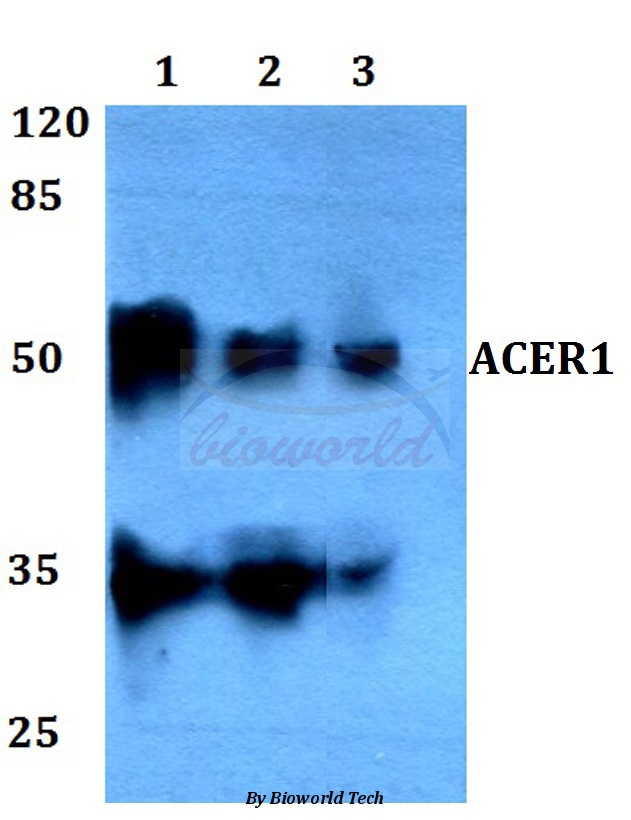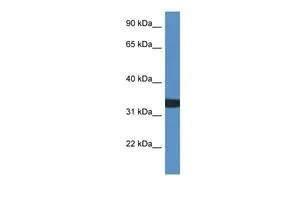ACER1 Polyclonal Antibody
RD217827A
ApplicationsELISA, ImmunoHistoChemistry
Product group Antibodies
ReactivityHuman
TargetACER1
Overview
- SupplierReddot Biotech
- Product NameACER1 Polyclonal Antibody
- Delivery Days Customer5
- ApplicationsELISA, ImmunoHistoChemistry
- CertificationResearch Use Only
- ClonalityPolyclonal
- Concentration1.2 mg/ml
- ConjugateUnconjugated
- Gene ID125981
- Target nameACER1
- Target descriptionalkaline ceramidase 1
- Target synonymsALKCDase1, ASAH3, alkaline ceramidase 1, CTB-180A7.3, N-acylsphingosine amidohydrolase (alkaline ceramidase) 3, N-acylsphingosine amidohydrolase 3, acylsphingosine deacylase 3, alkCDase 1, alkaline CDase 1
- HostRabbit
- IsotypeIgG
- Scientific DescriptionACER1 (Alkaline Ceramidase 1) is a Protein Coding gene. Diseases associated with ACER1 include Corneal Dystrophy, Posterior Amorphous. Among its related pathways are Sphingolipid metabolism and Sphingolipid signaling pathway. GO annotations related to this gene include hydrolase activity, acting on carbon-nitrogen (but not peptide) bonds, in linear amides and dihydroceramidase activity. An important paralog of this gene is ACER2.Ceramides are synthesized during epidermal differentiation and accumulate within the interstices of the stratum corneum, where they represent critical components of the epidermal permeability barrier. Excess cellular ceramide can trigger antimitogenic signals and induce apoptosis, and the ceramide metabolites sphingosine and sphingosine-1-phosphate (S1P) are important bioregulatory molecules. Ceramide hydrolysis in the nucleated cell layers regulates keratinocyte proliferation and apoptosis in response to external stress. Ceramide hydrolysis also occurs at the stratum corneum, releasing free sphingoid base that functions as an endogenous antimicrobial agent. ACER1 is highly expressed in epidermis and catalyzes the hydrolysis of very long chain ceramides to generate sphingosine.
- ReactivityHuman
- Storage Instruction-20°C
- UNSPSC12352203





